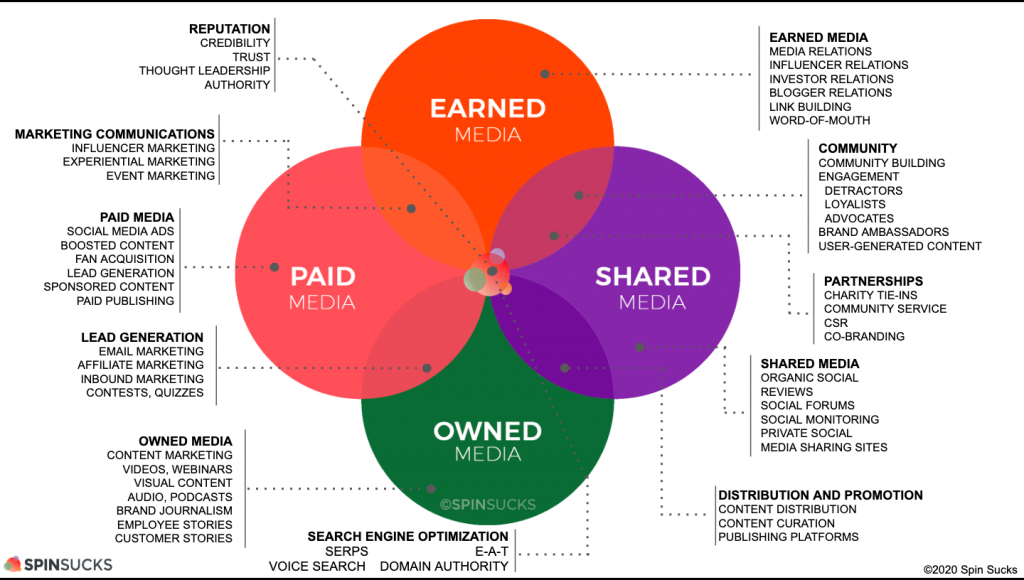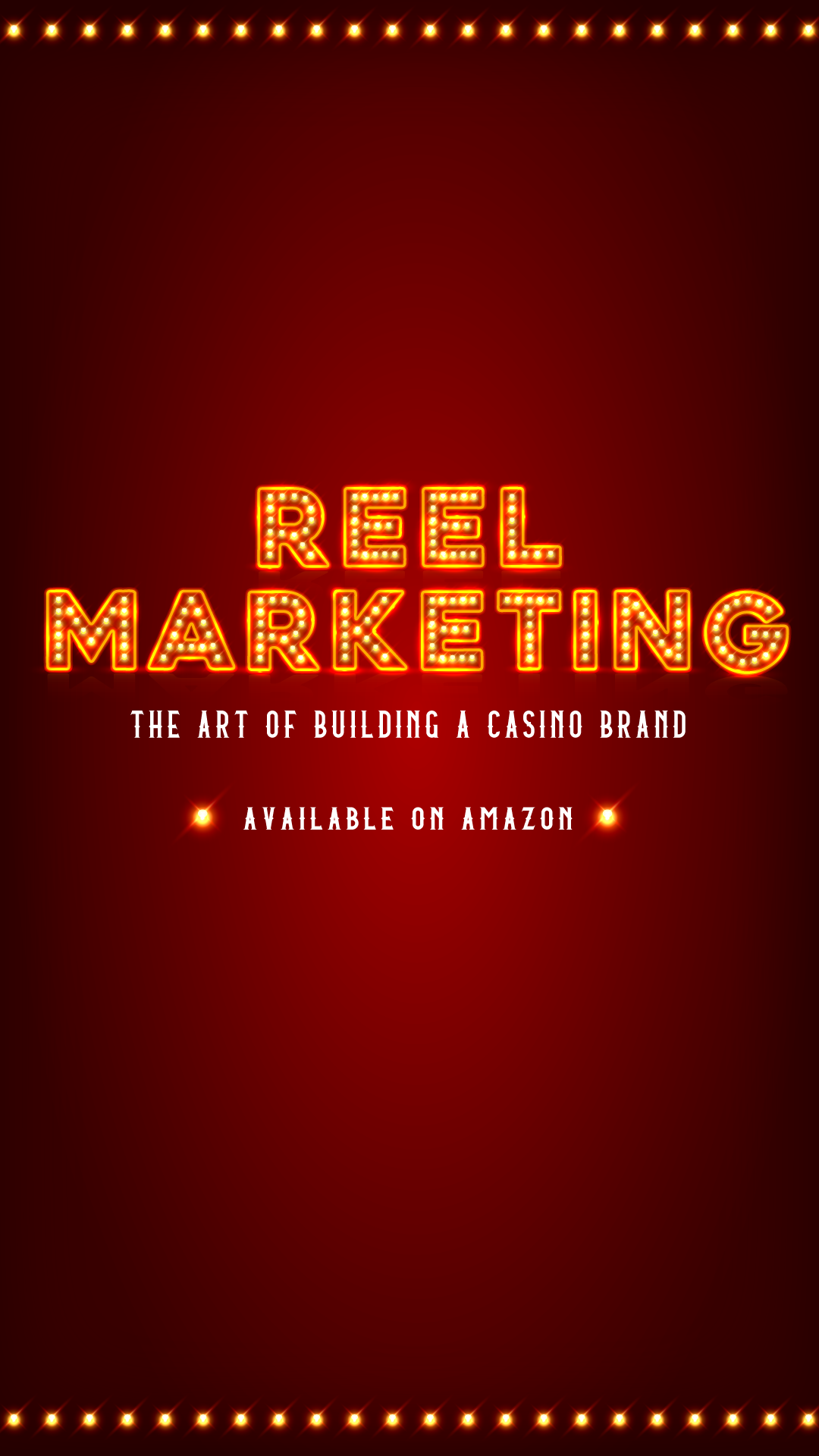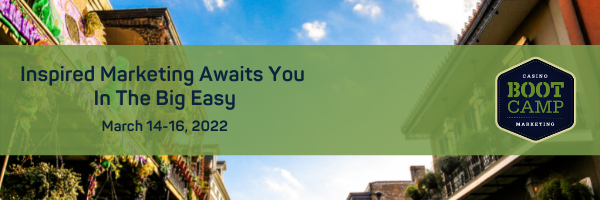Never before has there been such a glut of media yet so few people wanting to hear marketing messages. It is time to rethink our media efforts. And, by “media,” I mean all of our communications.
For years, many thought media came in two forms: paid advertising and free PR. Paid was, of course, the media we purchased as advertisers on TV, radio, newspapers, and magazines, as well as outdoor. I know what you are thinking. What about digital? I’ll get to that.
The so-called free PR were the stories in which we appeared in the news, good or bad.
Today’s modern marketer realizes that media has expanded in ways we never expected. The last decade has been a whirlwind of unprecedented changes. From social media becoming our main source of updates to podcasts and streaming, the shift to video and the rise of fake news has dramatically changed how we need to look at and use media to meet our strategic goals.
As the strategic casino marketers that we are, we should look at media in what Gini Dietrich and her team at Spin Sucks cleverly coined as the PESO model, which categorizes media into four distinct groups — paid, earned (or what used to be called “free”; more on that later), shared and owned.

It was not too long ago that casino marketers primarily focused on paid and earned media. How were we spending our ad dollars, and what “added value” could we get from a news story? Although we had websites, we thought of them more as digital brochures than as media. The changes to how we traverse the internet have forced us to consider shared and owned media with the same, if not more, careful eye and value.
First, let’s make sure we are on the same page with our definitions.
Paid is what we have always thought of as advertising – messages delivered on our behalf by a third party in exchange for payment. Typically, we work with an agency to develop the optimal media buy to reach as many people as possible as many times for as little money as possible. Then, our agency partners develop the perfect message that resonates with our target audience.
It has been traditionally thought of as an expense rather than an investment. The data we have traditionally worked with have been gross rating points (GRPs), reach, and frequency. Today, we have learned how to use the information in our databases to make those buys even more efficient. A few years ago, I shared how we used this approach to drive visitation from specific targets.
Over the years, we have also learned how to use the mediums properly and most effectively (i.e., outdoor for reminders and directions, television for brand building, print for information, and so on) And, most recently, paid media has expanded to include social media advertising, sponsored content, remarking, geofencing, and more.
Earned is what many foolishly used to (perhaps some still do) refer to as “free media” or “PR.” First of all, you have to admit it was never free. You had to pay for a public relations professional or agency to manage efforts and develop relationships with the media to get your message placed. Also, what we traditionally referred to as “public relations” has evolved to something more akin to media relations. The good news is that stories told by a reputable third party always had (and still does in most cases) more perceived credibility than advertising. The bad news is that this was never free. It takes time (sometimes a lot of it, so be patient) and effort, and even with the best effort, there is never a guarantee that your story will show up exactly as you envisioned.
Shared is not the new free. Interestingly enough, when social media gained a strong foothold, many started to refer to it as “free.” Lo and behold, we had to realize that was not the case. Again, it took the investment of time and effort. Whether you handled social in-house or through an agency, we all learned that the best efforts resulted from situations where we dedicated resources to creating content that targets and fans would want to share with their networks. As our efforts have matured, we have learned what outlets worked best for our businesses (LinkedIn for B2B; Facebook for consumer-facing messages, etc.)
We continue to experiment with emerging platforms and new techniques to get others to share our messages and speak wonderfully about their experiences at our casino properties. Who among us doesn’t ask friends and family to share their experiences as references for a decision we are trying to make?
Finally, there is Owned media – your website, your content, and for B2B businesses, the webinars you produce, the presentations you give, etc. This is media you control – in tone, in the message and frequency. However, it is media that takes more and more attention. We can no longer whip together a website and check it off the list. Google’s ever-evolving algorithms and the growing desire for consumers to research require us to tend to our owned media garden constantly. We have to feed it new content and weed it of old, outdated coding and information so that there is a constant traffic flow through our media.
It is also vital that we pay more attention to some of the opportunities we have for presentations and speaking engagements, whether internal or external. Along with the knowledge and insight we are sharing, we tell our company’s brand story with every click of a slide and the words we choose to use. We OWN that opportunity, yet we seldom give it great attention. We once took a typical investor presentation and changed it to a marketing presentation given to investors. The use of visuals versus the typical tiny type created a remarkable connection to everyone in the audience.
IT’S ALL MEASURABLE
Has there ever been an industry that loves to measure things like the casino industry does? One of the reasons media efforts seem to keep their position atop the budget cuts lists is because we really have not been able to grasp measurement. Sure we could talk about GRPs, reach, and frequency for advertising and ad equivalencies for public relations, but we have never really been able to connect the dots to actual business growth.
The idea of measuring advertising equivalencies and keeping clipping books is as outdated as someone not owning a cell phone. We need to look at this form of media in terms of a sales funnel. Envision your sales funnel as audiences on top, leads in the middle, and customers at the bottom.
As casino operators, we deal with the sales funnel every day. Think about your foot traffic on a Saturday. You know that a good Saturday night means that you will have approximately X number of people come through a door to get you to a targeted revenue amount. If you fall short of that foot traffic number, your gut will tell you that you may fall short of revenue even before you look at your flash report. Conversely, if you go over that foot traffic number, you start counting the seconds before you can get your hands on that flash report because you know it is going to be great.

If the bottom of the funnel is everyone who played either a slot machine or table game, that foot traffic is the middle – your leads, or everyone who comes through the door who may or may not spend money. The top is everyone who considered going to the casino on Saturday.
Marketing’s job is to develop a large enough audience at the (top of the funnel to get enough people to walk through the door (the middle) so that operations can convert some, most, or all, into customers (the bottom.) If you measure your marketing efforts purely in terms of revenue, you only measure ONE THING. While it is probably the most important thing, you have no real idea of what it took to get that result.
You have to look at the whole funnel or journey, from the top where marketing is building an audience, to the bottom where visitors convert to customers.
So the question becomes, how do you measure your efforts at the top of the funnel?
ROI is a simple formula – net profit divided by total investment. Now, let’s think about a very simplified situation. Let’s say you want to generate $1000 ADT. Your analyst has reviewed headcounts, revenue, actual profit, and so much more. She tells you that for every 10 people that come in the casino, you get one person to gamble, and that person represents an average of $100 ADT. Now you know you need 10 people to walk in the door to generate $100 ADT. Each person that walks in the door represents $10. You need 100 people to walk in the door.
Now you can analyze your web visits and calls to understand how much activity you have to generate to create 100 visits from a much broader audience.
Another simple example is that you have 1000 visits to your website. A certain number of those visits click on your hotel reservations page. A smaller number reserves a stay. If you know how many room nights you need to generate, you can back into a formula that will tell you how many visits you need to generate to your website.
Knowing your goal and how customer activity relates to the goal is a huge benefit in your planning.
From here, it is easier to manage your ad budgets, and reviewing web analytics suddenly has more of a story for you than just traffic. How many new visitors are you getting to your website (building your audience)? Are you tracking earned media placements to understand whether or not these efforts are creating traffic to your site in addition to the traffic you are driving through emails, social, and paid online media? Are you using unique URLs for your media efforts?
There are some things you can measure in each media category. It is important to understand which ones are actually linked to your business. You will need to start somewhere. So, here it goes.
Paid — Depending on the tactics you use, you could look at social media ads and sponsored content and the ability to create traffic to your website. If you are providing B2B downloadable content, how many pieces of content are being downloaded? How many people are opting into your newsletter? Are you getting new fans or followers from your sponsored posts or social media ads? It is time to end our love affair with online vanity metrics.
Earned — How much web traffic is coming from a story? Are they converting to leads by opting into your email database? Are these stories growing your audience (new visits to your website)?
I recently spoke to a casino public relations manager who was extremely proud of “getting” stories in the local papers, but I was stunned to find out he did not know if those stories created any impact. He was completely unaware that a free and simple tool like Google Analytics could help him tell a better story about his efforts.
Shared — While I do not believe in looking at fans and followers as your only KPI, I agree you have to maintain a certain level of growth to build your audience. So, do keep track of those levels, but think of creating a score sheet for your efforts (the score being driven by the value to creating a lead). How many points is a like worth? A retweet? A share? A comment? Use unique URLs and phone numbers in your efforts. You will get specific information to evaluate each effort.
Owned — Again, you do not have to invest in an expensive tool. Google Analytics will show you how many visitors you have in any period of time (new, unique, return). You will also understand how much time each person is spending on the site (and the difference if they are new or returning). You will also understand what parts of your content they are interested in, and perhaps sharing with their networks. If you can link online conversions like reservations to guest accounts, you will have an even better story to tell. Imagine knowing exactly which keywords convert to high-worth guests and which convert grind play.
Once you start measuring, you can start to understand what is and what is not driving business, allowing you to concentrate more on the drivers and less on the efforts that are not making a bottom-line impact. It is time to think of media efforts as business drivers and not just brand enhancers.




Recent Comments